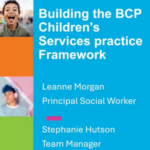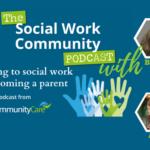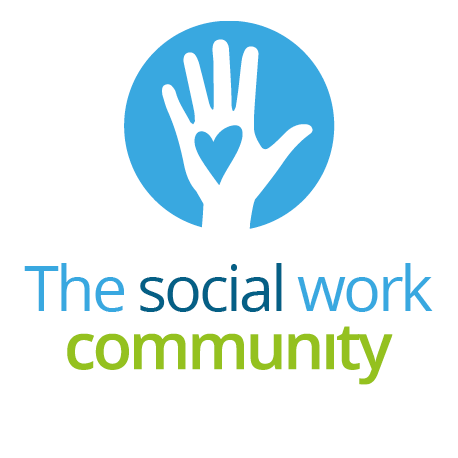
The youngest children are at increased risk of harm due to growth in the numbers of parents with mental health and substance misuse issues, research has found.
Directors linked the trends in parental needs to poverty, inadequate housing and the legacy of pandemic, and said they were leaving infants at risk of neglect and physical injury.
The findings were reported in the latest phase of the Association of Directors of Children’s Services’ (ADCS) Safeguarding Pressures research series, through which it has analysed demand for, and provision of, children’s social care since 2010.
Phase 9 of the series covered 2022-24 and was based on data from 124 local authorities, extrapolated to cover all 153 councils, survey responses from 86 authorities and interviews with 34 directors of children’s services.
Growth in parental mental ill-health and substance misuse
Department for Education (DfE) data has revealed growth in the numbers of children in need assessments which identified parental mental health or substance misuse problems between 2022 and 2024. According to the DfE’s children in need census:
- Parental mental health concerns were identified 165,480 times in 2023-24, up from 158,330 in 2021-22, a rise of 4.5%. This made it the most common factor identified following an assessment, replacing domestic abuse where a parent is the victim, for which there were 160,600 cases in 2023-24, a similar number to 2021-22.
- Parental alcohol misuse concerns were identified 72,410 times in 2023-24, up 3% on 2021-22 (70,310).
- Parental drug misuse concerns were identified 70,940 times in 2023-24, up 5.8% on 2021-22 (67,010).
Three-quarters of respondents to the ADCS survey said issues arising from a deterioration in parental mental health had increased pressures on their services over the past two years, while two-thirds said the same about parental substance misuse.
Increased numbers of infants at risk
Directors said this was leading to increasing numbers of infants being at risk of, or experiencing, serious harm, particularly neglect or physical injury, and they linked the rising levels of parental need to family levels, poverty and inadequate housing.
Most directors reported increasing demand for children’s services from poor quality housing, homelessness and families experiencing poverty as a result of welfare reforms.
They also linked increasing parental mental health issues to the legacy of the pandemic, new parents lacking experiences of “good enough parenting” from their own childhoods and cuts to other services, such as health visiting provision.
In response to the findings, sector what works body Foundations said they underlined “the need to provide effective mental health support for parents”, including through parenting support. Its deputy chief executive, Donna Molloy, said it would shortly produce guidance for councils on “proven interventions” in relation to parenting support for families in contact with children’s social care.
Rising numbers of initial contacts but referral numbers fall
Councils reported a rise in initial contacts regarding safeguarding concerns, continuing a trend dating back to 2007-8, with the number received in 2023-24 (3,001,339) 8% up on the 2021-22 total. Two-thirds of the 2023-24 contacts came from the police, health or education.
However, the DfE’s census has shown a decrease in the number of referrals to children’s social care, which fell from 650,270 in 2021-22 to 621,880 in 2023-24, as well as in the number of children in need plans and child protection plans from 2022-24.
The ADCS found that councils accepted 22% of contacts in 2023-24 as a children’s social care referral (compared with 24% in 2021-22). Fourteen per cent were passed to early help (down from 16% in 2021-22), 30% signposted to other services or resulting in the provision of information and advice (33% in 2021-22) and 23% resulted in no further action, up from 16% in 2021-22.
“This suggests that much of this demand is being managed through an increased early help offer and by local authorities acting as a central point for offering information, advice and signposting to other services on behalf of the local partnership,” the ADCS said.
Increased use of early help
Despite the drop in the proportion of contacts referred to early help from 2022-24, the ADCS said the number of such referrals had grown by 93% from 2015-16 to 2023-24, from about 224,000 to 431,000.
Two-thirds of survey respondents said they had increased their provision of early help and targeted family support services from 2022-24. This included the establishment of family hubs, which provide a range of support services to families in a single place and for which half of local authority areas have received funding since 2022.
The ADCS said family hubs were “viewed very positively” by directors, with three-quarters of survey respondents saying they had set up such services, including some who had not received government funding.
The association added that councils had also relied heavily on funding from the Supporting Families programme, under which families with multiple needs are provided with multi-agency support, co-ordinated by a lead practitioner, and for which councils have been provided with £695m from 2022-25.
Last November, in a move strongly welcomed by ADCS, the government scrapped the payment by results element of the scheme, under which most councils received some money up front with the rest delivered based on the outcomes achieved for families.
Rollout of family help
Looking ahead, the government has allocated £250m in 2025-26 to roll out the family help model, under which councils provide multidisciplinary support to families in need by merging existing targeted early help and child in need services and bringing in staff with expertise in areas such as domestic abuse.
The model is being tested in the 10 families first for children pathfinder areas, though ADCS found that some other councils were adopting a similar approach.
In relation to looked-after children, the ADCS report charted the significant rise in the number of unaccompanied children, which grew by 30% from 2022-24, from 5,680 to 7,380, according to DfE figures.
The ADCS also highlighted the changing composition of the group, with the proportion of boys rising from 90% to 96%, and the proportion of those aged 16 or 17 increasing from 86% to 89%, from 2020-24.
Concerns over care of unaccompanied children and care leavers
Despite the government’s National Transfer Scheme – which aims to ensure unaccompanied children are more evenly spread throughout the country – the ADCS found numbers were far higher in the South East, where the vast majority of young people arrive, than in other regions.
Directors said that the “absence of national planning and support to enable an effective and sustainable asylum system was a source of real concern”. They also reported struggling to provide young people with the trauma-informed care and support they needed.
The ADCS also highlighted the number of care leavers who were former unaccompanied children, which grew by 25%, from 11,640 to 14,560, from 2022-24, and warned that councils were being under-funded to support them.
‘Shortfall in care leaver funding leaving young people at risk’
It cited a report last year by East Midlands Councils, which said that Home Office funding covered just 59% of the costs of supporting former unaccompanied care leavers, with the region’s annual shortfall in cash rising from £5.2m to £7.5m from 2020-24.
“Respondents to both the survey and interviews described how a lack of access to education, employment and appropriate therapeutic support leaves young people in limbo, exacerbating
mental health difficulties, risk of exploitation and involvement in unlawful activity, such as modern slavery,” the ADCS said.
A growing workforce but concerns over experience and agency use
The Safeguarding Pressures report also referenced the fact that the number of social workers in post in local authority children’s services reached a record high – 33,119 full-time equivalents – in September 2023, up by 4.7% on the year before.
The ADCS said that the increased numbers were largely newly qualified staff, “which can create pressures on more experienced colleagues”.
The report also noted that the number of agency staff in post also reached a record high (7,174 full-time equivalents) in September 2023, representing 17.8% of the workforce.
The association said that, while the 10 authorities with the lowest rates of agency use were all rated outstanding or good by Ofsted, seven of the 10 with the highest rates were rated inadequate with another two graded as requires improvement.
“[Directors] report that a negative judgement following inspection by Ofsted generates increased staff churn and reliance on agency social workers,” the report said.
Agency social work rules
In October 2024, the government began implementing rules on councils’ use of agency social work, which will be fully in force by October 2025. These include:
- A bar on staff with less than three years’ experience in a permanent role in local authority children’s services from taking up an agency post.
- A three-month ban on councils engaging social workers as locums within three months of them leaving a permanent role in the same region.
- Regionally agreed caps on maximum hourly pay rates for agency staff.
- Ensuring councils have direct management of staff supplied through agency project teams.
The ADCS is very supportive of the rules, but have called on the government to go further, by banning project teams outright for case-holding social work.
While the government has not committed to this, it has pledged to strengthen the agency rules by putting them into legislation and to extend them to non-social work roles in children’s services.






 Bournemouth, Christchurch and Poole
Bournemouth, Christchurch and Poole  Hampshire County Council
Hampshire County Council  Oxfordshire County Council
Oxfordshire County Council  South Gloucestershire Council
South Gloucestershire Council  Wokingham Borough Council
Wokingham Borough Council  Webinar: building a practice framework with the influence of practitioner voice
Webinar: building a practice framework with the influence of practitioner voice  ‘They don’t have to retell their story’: building long-lasting relationships with children and young people
‘They don’t have to retell their story’: building long-lasting relationships with children and young people  Podcast: returning to social work after becoming a first-time parent
Podcast: returning to social work after becoming a first-time parent  How managers are inspiring social workers to progress in their careers
How managers are inspiring social workers to progress in their careers  Workforce Insights – showcasing a selection of the sector’s top recruiters
Workforce Insights – showcasing a selection of the sector’s top recruiters 

 Facebook
Facebook X
X LinkedIn
LinkedIn Instagram
Instagram
It’s clear that poverty and inadequate housing play a significant role in the challenges facing families. How can child protection services better address these root causes to prevent neglect and harm, rather than just reacting to the outcomes?
Perhaps social work can go back to being a campaigning profession on such issues rather than settling for being third rate managers at perpetuating inequalities while bemoaning that there is no real progress in changing them. Smug platitudes and pleading for extra funding is not only a sign of impotence but is frankly also embarrassing. Just a thought.